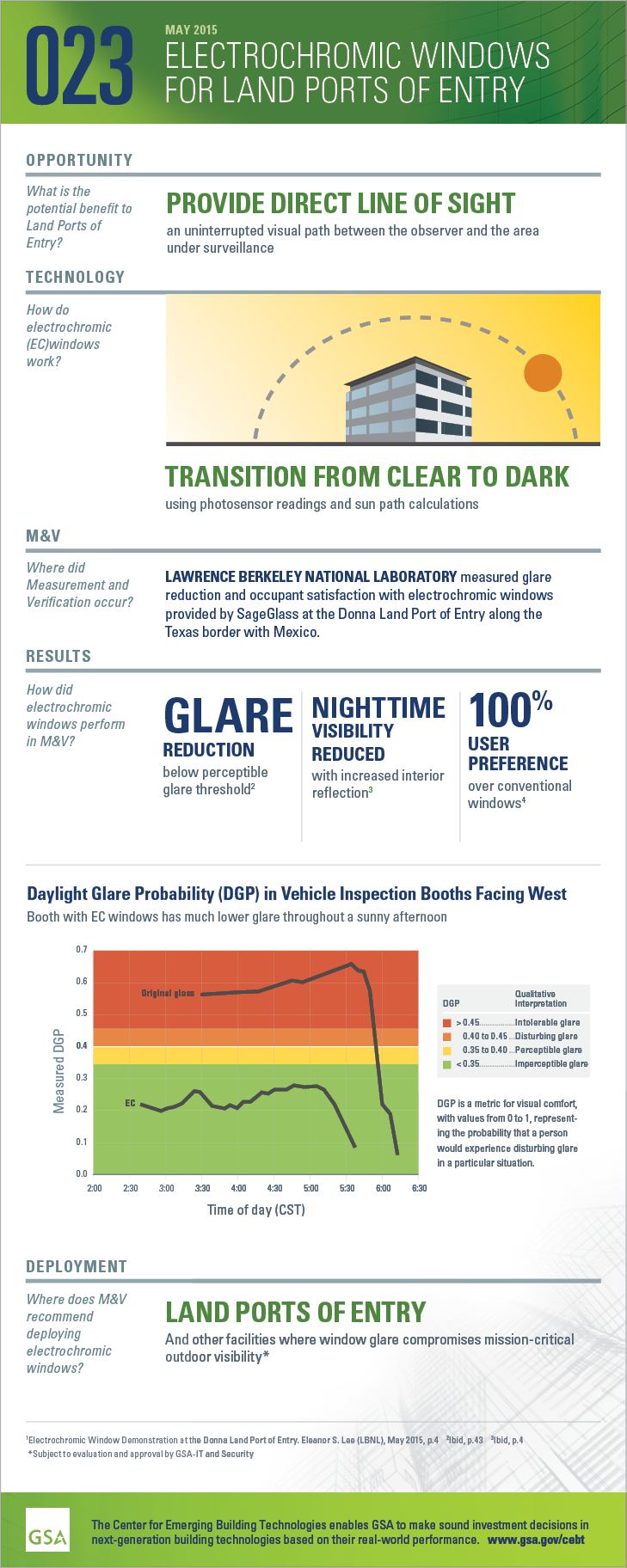Electrochromic Windows for Land Ports of Entry
In sunny conditions, views through windows can be severely compromised by glare. Lawrence Berkeley National Laboratory (LBNL) conducted a pilot study of electrochromic windows at the Donna Land Port of Entry (LPOE) at the Texas border with Mexico. Researchers found a significant reduction in glare, along with high user satisfaction. View full-size infographic. [PDF - 230 KB]
Reference above to any specific commercial product, process or service does not constitute or imply its endorsement, recommendation or favoring by the United States Government or any agency thereof.
WEBINAR
NEWSLETTER
ADDITIONAL RESOURCES
Last updated: Jun 27, 2023
Top

 U.S. General Services Administration
U.S. General Services Administration
